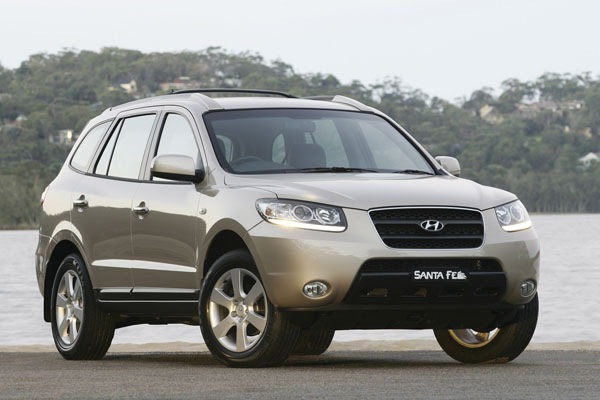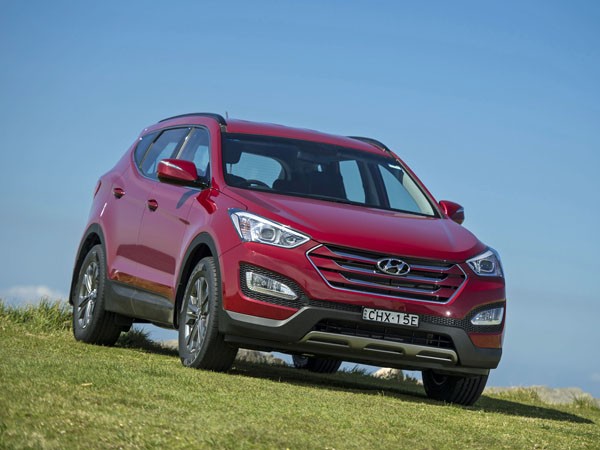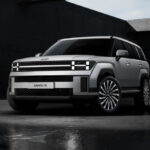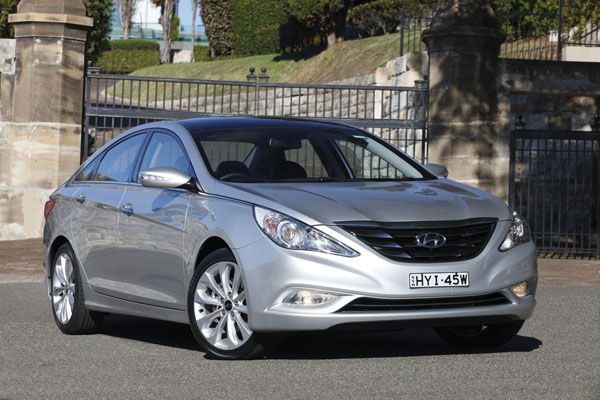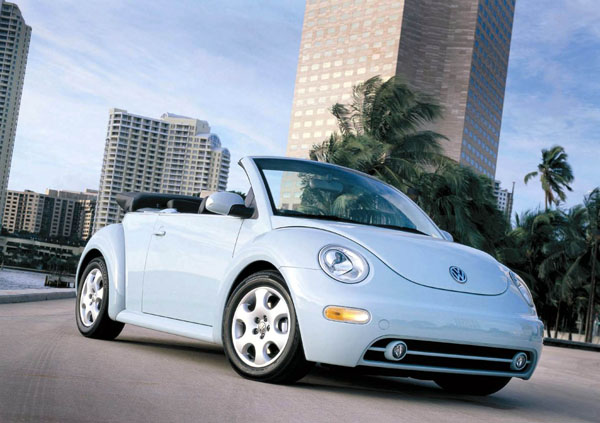Hyundai Santa Fe is a popular Korean vehicle that has had several stages in its life. It began as a light-duty 4WD, not simply an SUV, but reflected buyer needs by recently moving into station wagon territory, though still with some unsealed-road capability.
There’s good legroom in the rear of the older models, but some of that is due to limiting the legroom in the front seats. The Santa Fe from May 2006 was larger than its ancestors and a third-row seat option was offered as an option. Try before you buy, preferably by taking the whole family on your test drive.
There’s good luggage space, including side bins and hidden storage space under the floor panel. A retractable blind and luggage net combine to improve safety and security.
Luggage space is good in those with two rows of seats. As in any vehicle of this size, the extra row of seats takes a lot of room out of the boot area.
Hyundai Santa Fe first arrived in Australia in 2000. While some saw it’s somewhat over-the-top styling as a turn off others appreciated that the South Korean designers were having a go at being different.
However, the all-new and larger model, launched in 2006, took a safer styling path, being more mainstream. The change in shape paid off and there was considerably more buyer interest.
The third generation Santa Fe, is longer and wider than its predecessors, but in a sign of the times, is lower and is marketed as a practical station wagon not a 4WD.
Ride comfort is generally good and improved with each new generation. Handling is nicely sorted for Australian conditions, from the start the Korean suspension guys had a good feel for what Australian drivers like in their vehicles. Over the years more and more input was added to all vehicles in the Hyundai range by Australian chassis engineers. In the bush the Santa Fe copes well with corrugations.
Santa Fe originally arrived only with a 2.7-litre V6 engine, but the range was expanded in 2001 when a four-cylinder 2.4-litre engine was added to the choice. But, the four-cylinder engine wasn’t all that popular and was taken off the Australian market towards the end of 2003.
From late 2006, Hyundai offered its Santa Fe with a turbo-diesel engine for the first time in Australia. The potential fuel savings make it worth hunting down.
Four-cylinder powerplants in the 2012 new-generation Santa Fe range are exceptional units, with big grunt in the petrol, and even more in the turbo-diesel.
Santa Fe is fairly traditional in its mechanical makeup and the good home mechanic will find that they are able to do much of the work. It always pays to have a good workshop manual at hand, and don’t attempt any safety related repairs unless you really know what you are doing.
The Hyundai dealer network is large and the company is well represented in most areas of Australia, though, obviously the big push is in the metro areas. Dealers aren’t that common in the bush, but the number is growing steadily. Check your local area to make sure spares and service are on offer close handy. Spare part prices are about average for this class and we seldom here of any real problems with them being in stock.
Insurance charges are moderate, though there does seem to be a bigger than average spread of premiums between companies. So it’s worth taking the time to shop around for the best deal for your circumstances.
WHAT TO LOOK FOR
Check for signs of underbody damage caused by harsh off-road use. The body corners and doors sills are often the first to suffer. Also look at the protection plates under the engine for damage.
While you are under the vehicle look for white stains that may be the residue of salt water picked up during a trip to the beach. Salt water can create corrosion very quickly. However, the Santa Fe’s body is well sealed.
Look for fine scratches in the paint where the body has been squeezed past branches. Deeper scratches are likely to have been caused by trees or rocks.
Look over the interior for signs of it having had a hard time at the hands of uncaring children. Build quality is generally good, but there can be the occasional rough one.
Check that the engine starts easily, that it pulls well and doesn’t hesitate when accelerated suddenly.
Make sure the transmission operates smoothly and easily and that there are no funny noises from the driveshafts and universal joints.
CAR BUYING TIP
Fewer and fewer SUVs and 4WDs are going off-road these days. If you do come across a used one that’s battled in the bush either expect a lower price, or look elsewhere.





